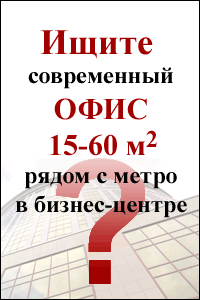Electronic money gradually winning over consumers’ minds and souls

Everyone has long been accustomed to the fact that money is something concrete, material, embodied in paper, metal or other similar items. At least, this has been the case till recently. However, the 21st century, being the era of total computerization and “internetization” of everyday habits and traditional ways of life, as well as globalization of national and international commercial activities, has made some substantial adjustments to these common traditional economic concepts that are familiar to everyone. In other words, these concepts have been transformed to reflect the changing era, namely, that modern money in the era of new technologies and innovations must be also be innovative and technological. Today, this has become a reality.
Thus, today, modern money, while fully retaining its historical essence and materiality, has also become “virtual” or “electronic”, depending on one’s preferable terminology. Like the traditional money, virtual money also represents financial obligations, but expressed in an electronic form. Simply said, it is a digital file with money that is issued by a credit institution. Every year, the electronic money market gains weight: For instance, in 2010, the market size was valued at RUB 70bln, but in 2011 it has soared to over RUB 125bln, a figure, which, according to expert forecasts, will surge to RUB 200bln by the end of 2012.
Furthermore, according to Step by Step, a group of companies, specializing in market researches, in 2011, the number of active “electronic wallets” grew to 34m. The company’s analysts forecast further growth of the Russian electronic payment services market to RUB 323bln by 2015. Despite the expected gradual decline growth, the market size is being projected to grow by over 30%, thanks to the yet-to-tapped huge, but currently latent market potential.
Similarly, the average sum of a single payment is also increasing. For example, during the first quarter of 2011, it grew by 13.1% to RUB 152 year-on-year. In other words, simplest mathematical calculation, based on such these data, puts the minimal aggregated sum of single payments at about RUB 5.2bln. The total daily amount, and hence the weekly and annual sum, is easy to calculate. Hence, an unambiguous conclusion: the aggregated amount of “virtual rubles” circulating in all the sectors of the Russian economy today runs into hundreds of billions, or even trillions of rubles.
“Today, modern money, while fully retaining its historical essence and materiality, has also become “virtual” or “electronic”, depending on one’s preferred terminology.”
These trends are boosted by the growing rates of accelerated internetization and penetration of mobile communication technologies into people’s lives, as well as e-commerce’s high speed of winning over the minds and hearts of consumers, notably the city dwellers. For example, today, in several Russian regions, some goods can only be ordered via Internet stores that accept only electronic payments. Also, with the advent of the Internet in most towns, rural settlements and villages, it has become much more convenient for citizens to pay for their utilities services via electronic payment systems, where commission is much lower than in the traditional banks, formerly used exclusive for this purpose.
According to Euromonitor International’s data, in 2009, the size of the Russian online sales market totaled about RUB 130bln. However, this figure, by the end of 2011, rose to RUB 240bln, according to the market data compiled by another globally recognized corporation, PriceWaterhouseCoopers. The latter’s figure was based on a report prepared by Data Insight, which was titled, “Future of the Internet: Online Commerce”. As a rule, the lion share of online sales is paid via credit cards or electronic money.
Such positive trend can be attributed to the user-friendliness of electronic payment tools. With the increasing speed of contemporary life, people have become more mobile, and having “electronic currency” on hands has become an integral part of people’s daily activities.
In other words, contemporary consumers – be they businessmen, government officials, medical doctors, students or housewives – even while staying at home can shop and/or pay for their utilities, telephone bills, repay loans or buy goods via Internet stores. The same applies to those traveling in a train, sitting in a cafe or in a car stuck in a traffic jam either as a driver or passenger. People in such conditions can simply and easily open their cellular phones or other mobile devices or gadgets and buy whatever they need at that moment. It goes without saying that most of such purchases are paid for via credit cards and “virtual money” held in digital wallets.
According to Oleg Grishin, CEO of Rapida, one of the industry leaders, the National Payment System law that recently came into force can significantly increase the market size, but is also expected to reduce the growth rate. “But having said that, I would like to note that I don’t have any doubts over whether the market will continue to grow or not. And, if we are talking about trends, what is expected to happen soon will the expansion of electronic money from online to offline, in other words, it will be more commonly used in the traditional shops,” he added. "This is due to demand from customers and government initiative to reduce the share of cash in the economy. In other words, e-money will no longer be a sole attribute of e-commerce, but will become a full-fledged universal payment instrument.” (the full text of this expert’s interview is in the Expert Corner’s rubric).
Digital wallets competing with traditional money and credit cards
Electronic cash, or digital wallets as they are often called, is here to stay, a trend that is being reflected in the business strategies of some retail investors, who have begun opening stores or incorporating firms that offers goods or services that bought or acquired via electronic payments. For instance, Russia will soon see a supermarket chain, where payments for goods will be made not in cash, but exclusively via credit cards or e-money. Consequently, traditional “human” cashiers will be replaced by ATMs and Internet interfaces that accept payments executed via credit cards and money from the clients’ digital wallets on the spot.
 Oleg Grishin — the CEO of Rapida: "Beginning from 2008, and despite the crushing financial crisis, our turnover has been increasing rapidly to reach RUR200bn today. There are several reasons for this robust growth.”
Oleg Grishin — the CEO of Rapida: "Beginning from 2008, and despite the crushing financial crisis, our turnover has been increasing rapidly to reach RUR200bn today. There are several reasons for this robust growth.”
Such innovation will additionally increase the size of the electronic money market. If presently e-money can mainly be used only via PCs or cellular and other mobile gadgets, the market is being forecast to see exponential growth in 2013 as it will become more accessible to larger number of citizens, when a single unified national ID identity card, which will combine several vital documents, will be introduced.
Nevertheless, even now, when the market is only evolving, one cannot help but notice that the popularity of e-money and electronic payment systems is quite high. According to the data of TNS and other experts’ evaluations, some of the most popular systems in today’s Russia include Rapida, Yandex-Money, Qiwi-Wallet, WebMoney, PayPal and Dengi@Mail.ru.
But, despite its relatively “tender age,” electronic money has already become a real competitor to both the traditional paper money and banks’ credit cards, more popularly known in the country as “creditki.’ According to market players and industry experts, electronic money is far from simply participating in this competition on the so-called Olympics principle, as it sometimes has the upper hand in the fierce competition for clients against its “much older counterparts,” or fast becoming more attractive or preferable in terms of convenience and portability. These positive trends for e-money are being captured today by different surveys and reflected in results of special focal studies in all the economic sectors and behavioral preferences of large cities residents.
The expanse of the range of virtual money application is also impressive. One such sphere of active application quickly more and more attention is online commerce. According to the results of a study conducted by PwC in 2011, almost 92% of all respondents made purchases via the Internet. Of this number, about 70% of the respondents usually make online purchases at least once in three months. And, according to the data compiled by R-Trends, the most active online buyers, for obvious reasons, are representatives of two major age groups: from 18 to 24 and from 31 to 35.
It is this category of people, who might be referred to as gadget-maniacs — in the best meaning of this word that are usually faster to embrace the latest innovative applications, tends to make most purchases online. Naturally, some of the acquisitions are exclusively paid for via electronic payment systems. The fashion for “trendiness,” as understood by the youth, as well as technological effectiveness, quickness and lack of the need to carry about a thick wallet stuffed with banknotes, in case of paper money, or thin plastic cards with a set of digital passwords, in case of credit cards, are giving electronic money the upper hand in the popularity index contest among consumers.
“These positive trends are boosted by the growing rates of accelerated internetization and penetration of mobile communication technologies into people’s lives, as well as e-commerce’s high speed of winning over the minds and hearts of consumers.”
One question that is often asked by lay audience, especially the elderly, who are traditionally “several light years” from the progresses made in information technologies and innovations, is what can and how does can one spend virtual money. A special marketing research among Russia’s residents, conducted by TNS, was dedicated to the search for answers to this question, namely, “the most frequent goods or services paid for via electronic money.”
Thus, according to the results of this research, the lion share of the e-money is spent on the payment for mobile communications, and this is done by the majority of the respondents (56%), and then followed by the payment for the Internet services (47%), purchases in online stores (42%), utilities (27%), air and railway tickets (24%) and fines (12%). The total sum of responses as percentage exceeded 100% as the respondents were allowed to provide several replies to one question.
In terms of protection from cybercrimes, electronic money has overtaken traditional and bank credit cards. All experts have noted that level of protection provided by electronic cash is higher than those of its older counterparts. Talking about the security system, experts stated that electronic money has shown very good results, because it is very difficult for Russians to trust bank cards in principle. There is a host of stories about illegal and fraudulent withdrawals of money from bank accounts (see the special report dedicated to this subject in the September issue).
But with electronic money, everything is different, as it has a special fraud protection system. The fact is that such a high degree of reliability and protection of confidential information is achieved by using a special cryptography method, the so-called “blind” digital signature. This tool allows establishing the authorship and authenticity of a document, namely, denomination of banknotes, based on cryptographic methods, but the issuer does not know the number of such a banknote, which is exposed only to the owner of the money.
Since electronic money is stored in the computer system, the computer itself must be reliably protected by an antivirus system. “It goes without saying that the security of the users of our system is our primary and ongoing concern,” Asya Melkumova, the press secretary of online payment company Yandex.Money, said. “From time to time, Yandex.Money distributes free antivirus programs to its users of its own accord,” she added. “To ensure the highest level of safety of clients’ money, their accounts are protected with two passwords: thus it will not suffice to only know the password and the login, it is also necessary to know the payment password. But for enhanced protection, we also recommend our clients to use once-only passwords.”
 Experts have specifically noted that such a system of protection of electronic money transactions is characterized by reliability and high quality. But this system has been adopted in Russia relatively recently, therefore not all of its capacities have been fully put to use or seriously tested in practice. On the other hand, many users that have already tried it have expressed full satisfaction.
Experts have specifically noted that such a system of protection of electronic money transactions is characterized by reliability and high quality. But this system has been adopted in Russia relatively recently, therefore not all of its capacities have been fully put to use or seriously tested in practice. On the other hand, many users that have already tried it have expressed full satisfaction.
Banks eager to get a share of the rising trends
Today, clients that log onto the sites of their banks are often offered to use their online services, on the spot. This is much more convenient than looking for the nearest ATMs, bank’s branches or its terminals all over a district. In order to attract clients, banks are offering more friendly terms. For example, accepting online payments for goods and services without commissions or using currency exchange rates that are better than those in their branches and ATMs.
According to experts, operations done by banks via such payment system hardly qualify as electronic, as the payments are effected via clients’ credit card accounts. In order to avoid falling behind, companies providing electronic payment services have attained a high level of e-money protection. They usually apply the double code cryptographic protection system, which ensures even more reliable protection. Also, an SMS-information system is available for the clients of Internet banks, which notifies a client of all transactions on his/her accounts.
In order to catch up with modern trends, all major Russian financial corporations, including the industry’s hegemonic leader, Sberbank, are entering the e-money market in droves. Notably, Sberbank has been very active in this aspect, as it had tried to buy several players in the industry. Successful deals will, undoubtedly, be a boost for the state bank, but the main question is how this will impact on the other commercial banks, already operating in the industry, which account for the main bulk of the market’s operations.
This has raised justified concerns among commercial banks, as Sberbank, with its trillions of assets and privileged status as the biggest state bank, has a good chance of easily becoming the e-money market’s new leader, at least because most Russians trust it more than the other financial services companies.
Review of the use of e-money systems in other countries
The term “e-money” is relatively new, and is often applied to refer to a wide range of payment instruments. Consequently, there is currently no universal definition for the neologism, and therefore, the existing definitions and concepts have geographical intonations, and hence referred to as the European (which is the most developed system today), American and Asian approaches.
These definitions or approaches envisage different applications of e-money. For example, the European approach sees it as a new form of money, which is subject to special issuance and circulation regimes. Under this definition, cash is kept in an electronic device and is issued upon receipt of the amount paid as an advance for goods and services. It is accepted as a form of payment by other institutions.
From the standpoint of the American approach, the electronic money is a new type of payment service provided by credit institutions only, whist the Asian approach is rather specific, as it is used mostly Japan, Singapore and Taiwan. However, one thing is common to all these definitions and that is they are all see e-money as a new form of deposit or its electronic substitute, an understanding that has taken root on the market.
Presently, there are lots of payment systems in the world. But the most common and popular one is PayPal, which, as at the beginning of 2012, operates in  over 190 countries with over 164 million registered users. Another popular payment system is WebMoney, which has operations in 70 countries worldwide.
over 190 countries with over 164 million registered users. Another popular payment system is WebMoney, which has operations in 70 countries worldwide.
Market development trends*
Internet-based electronic payment systems increase data transfer safety, expand functionality and adjust service interface, depending on the users’ requirements such as flexibility, information capacity, simplicity and attractiveness). The number of Internet-enabled payments via payment terminals has decreased, partly due to the increase in the commission rates. The industry operators have attributed the increase in commissions to high rents and changes in legislation.
Specifically, this refers to the amendments to the Federal Law-103 on The Acceptance of Payments from Individuals by Payment Agents that require payment terminals to be furnished with cash register equipment (CRE) and registered with it the Federal Tax Service, which took effect in 2010. The costs of setting up terminals with CRE and the additional work- and paper-documentation flows that ensured were in included in the sizes of the new commissions on such transactions.
The increase in commissions makes clients seek alternative payment methods. As they look for cheaper services, clients are increasingly reverting to traditional banking services which, unlike the payment agents, do not require CREs. In 2010, a number of major banks entered the electronic payments market, including such behemoths as Alfa-Bank, VTB-24, Master-Bank, Rosbank and Russky Standart, and since then the trends have only increased. For instance, Finnam Bank alone bought up to 400 terminals in March this year.
Companies, whose communication capacities enable them to create new services, have begun to consolidate their positions on this market. Thus, in 2011, VimpelCom and Alfa-Bank announced the creation of a new universal electronic payment system, branded RURU. The system receives online payments on behalf of different trade and service enterprises based on mobile technologies, electronic commerce, e-money, credit cards, and in the nearest future, will also accept payments based on the Near Field Communication technologies, etc.
Today, a new service, called, “electronic money loans,” has appeared on this market. Generally, an electronic payment system (EPS) cannot issue loans, since it is not a bank, but only medium for payments. To overcome this legal barrier, the EPS teams up with banks as logical partners. In this case, the partnering bank technically issues the loans that are sent as electronic cash into the clients’ electronic wallets via the EPS. For the users of electronic payments in remote localities, this way of securing bank loans may be their only option possible.
All these market trends have led to a sharp increase in the volume of virtual cards sold via EPS. For instance, in 2010 Yandex.Money launched the sale of a virtual card, branded MasterCard Prepaid, which is accepted as a payment tool for goods and services worldwide, such as Amazon, PayPal or eBay.
The growing cooperation of electronic payment systems with the state is another important trend. First, the government fully supported the introduction of a universal electronic card, whose functionality includes use of electronic payment tools. Second, increasing number of state services is now being paid for with e-money tools.
Also, the EPS has started making its way into social networks. Thus, in April 2010, the VKontakte social network announced the launch of its payment system, however, after the adoption of the Federal Law-161 that regulates the national payment system, the ambitious was terminated due to its unprofitability that resulted from the toughening of the legal requirements. Similarly, another social network, Odnoklassniki, translated as “classmates,” has also started embracing e-money payment tools. For instance, it has recently begun some forms of cooperation with WebMoney. Besides, it has also launched its own e-money payment project, which unlike the Vkontakte, is still functioning.
“But, despite its relatively “tender age,” electronic money has already become a real competitor to both the traditional paper money and banks’ credit cards.”
The development of the EPS market is boosted by the active penetration of electronization of services. In particular, the share of Internet payments for utilities and communication services is growing dynamically. Furthermore, different business spheres are expanding their offers for e-money tools. This is particularly of the financial and mobile telecommunication services sector, notably in the spheres of replenishment of phone accounts, bank deposits, broker accounts, etc.
Today, there is an increasing number of stores and enterprises that are accepting payments in the form of e-money from the electronic wallets of Yandex.Money, WebMoney, etc. As Internet services become more available and accessible, the number of such stores and companies will only increase at much faster rates. Indeed, the growth of the Russian electronic money market in 2010 had substantially increased the attractiveness of such payment systems as investment assets. This is evidently displayed by the acquisition of part of the shares of QIWI Ltd. by the Japanese holding, Mitsui&Co, and the IPO conducted by the Mail.ru Group, which holds shares in such payment systems as QIWI and Money.Mail.ru.
More and more of such business opportunities are springing in the relatively new industry, and making it more and more interesting for both pioneers that launched the services several years and the newcomers ambitiously focused to make the best of the opportunities offered by the new era of electronically powered digital money payment services and e-commerce.
* based on the market analysis made by the Step by Step Group.

 Oleg Grishin — the CEO of Rapida: "Beginning from 2008, and despite the crushing financial crisis, our turnover has been increasing rapidly to reach RUR200bn today. There are several reasons for this robust growth.”
Oleg Grishin — the CEO of Rapida: "Beginning from 2008, and despite the crushing financial crisis, our turnover has been increasing rapidly to reach RUR200bn today. There are several reasons for this robust growth.”  Experts have specifically noted that such a system of protection of electronic money transactions is characterized by reliability and high quality. But this system has been adopted in Russia relatively recently, therefore not all of its capacities have been fully put to use or seriously tested in practice. On the other hand, many users that have already tried it have expressed full satisfaction.
Experts have specifically noted that such a system of protection of electronic money transactions is characterized by reliability and high quality. But this system has been adopted in Russia relatively recently, therefore not all of its capacities have been fully put to use or seriously tested in practice. On the other hand, many users that have already tried it have expressed full satisfaction.  over 190 countries with over 164 million registered users. Another popular payment system is WebMoney, which has operations in 70 countries worldwide.
over 190 countries with over 164 million registered users. Another popular payment system is WebMoney, which has operations in 70 countries worldwide.











 Web design,
Web design,